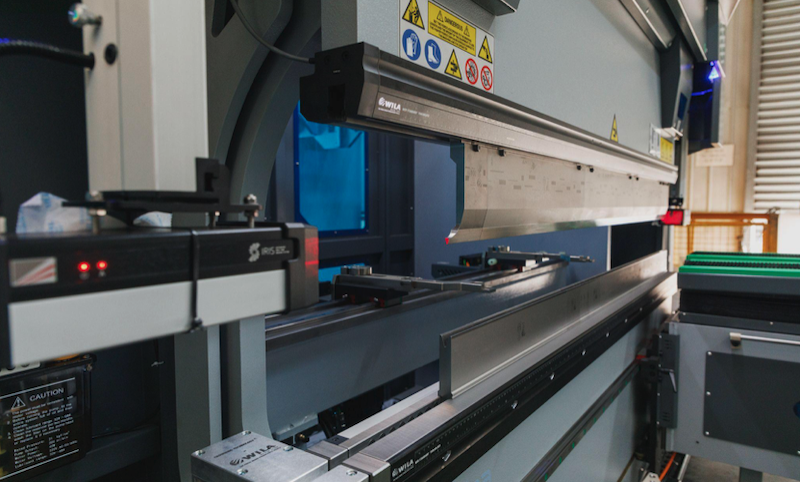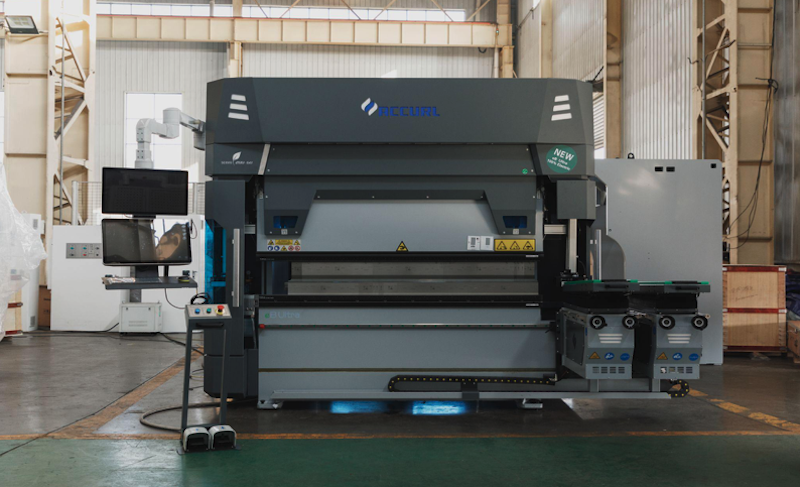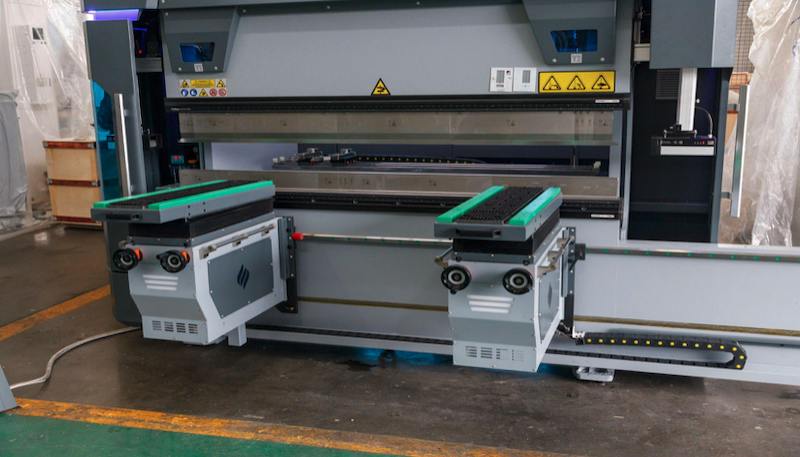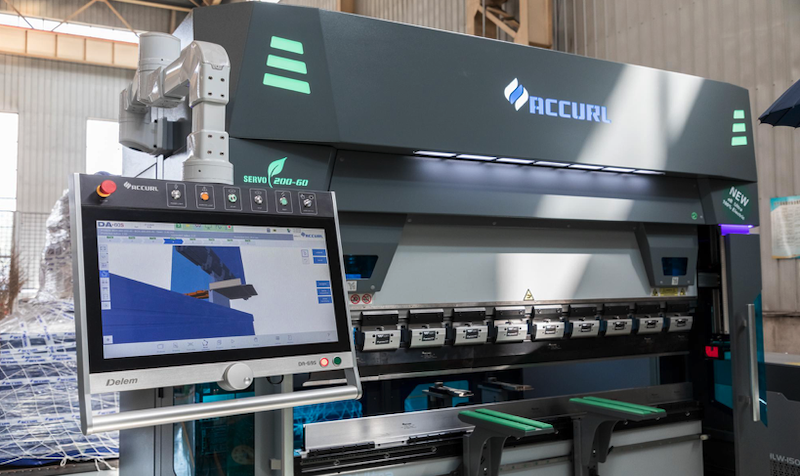In the ever-evolving landscape of manufacturing technology, the advent of robotic press brakes is a testament to human ingenuity and the relentless pursuit of perfection.
This comprehensive guide delves deep into the world of robotic press brakes, exploring their origins, functionalities, benefits, and much more.
Aimed at both novices and seasoned professionals, this article promises to be your go-to resource for understanding and leveraging this groundbreaking technology.
Brief History and Evolution of Press Brakes
The journey of press brakes began over a century ago, with the inception of manual devices designed to bend and shape metal.
As industrial needs grew, so did the technology, evolving through hydraulic and CNC (Computer Numerically Controlled) stages, each leap enhancing precision and flexibility.

Yet, it is the integration of robotics that has truly revolutionized press brake technology, offering unprecedented levels of efficiency and accuracy.
The Role of Robotics in Modern Press Brake Technology
Robotic press brakes embody the pinnacle of automation in metal forming. By integrating robotic arms with traditional press brake machines, manufacturers have unlocked new realms of productivity, consistency, and safety.
This fusion of technologies streamlines operations and opens up possibilities for complex and intricate designs that were once deemed impractical.
What Are Robotic Press Brakes?
Robotic press brakes are advanced manufacturing tools that combine the force of press brakes with the precision and flexibility of robotics.
These machines are designed to automate the bending process of metal sheets, using programmed instructions to execute precise bends at high speeds.

How Robotic Press Brakes Differs from Traditional Press Brakes
Unlike their traditional counterparts, robotic press brakes minimize human intervention, reducing the margin for error and significantly increasing throughput.
The automation they offer extends beyond mere repetition; it allows for adaptive learning and adjustment, ensuring optimal performance even with complex tasks.
How Do Robotic Press Brakes Work?
At the heart of a robotic press brake operation lies a harmonious interplay between software and hardware. The process begins with digital models that guide the robotic arm to manipulate metal sheets with exactitude, according to predefined patterns and sequences.

Key Components of Robotic Press Brakes
Before diving further, it’s essential to understand the components that make up a robotic press brake:
- Robotic Arm: The primary executor of bending tasks, offering flexibility and strength.
- Control System: The brain of the operation, where all tasks are programmed and monitored.
- Press Brake Machine: The core mechanism for applying force to bend metal sheets.
- Backgauge: A positioning system that ensures the metal sheet is accurately aligned for each bend.
The Process of Bending Metal with Robotic Press Brakes
A typical bending operation involves several steps:
- Programming the desired bend sequences into the control system.
- Positioning the metal sheet using the back gauge.
- Executing precise bends through coordinated movements of the robotic arm and press brake machine.
- Inspecting and adjusting as necessary to ensure the final product meets specifications.
Why Use Robotic Press Brakes?
Advantages of Robotic Press Brakes
The adoption of robotic press brakes brings a multitude of benefits:
- Precision: Achieve exact bends time after time.
- Efficiency: Complete tasks quicker than ever before.
- Flexibility: Easily switch between different tasks and designs.
- Safety: Reduce the risk of accidents by minimizing human interaction with heavy machinery.
Limitations and Challenges
Despite their advantages, robotic press brakes are not without their challenges. High initial costs, complexity of setup, and the need for skilled operators can pose barriers to adoption.
However, with strategic planning and investment, these hurdles can be overcome, unlocking the full potential of this technology.

Applications of Robotic Press Brakes
Robotic press brakes find applications across a wide range of industries, from automotive to aerospace, where precision metal forming is crucial.
They are instrumental in producing components with tight tolerances and complex geometries, demonstrating their versatility and indispensability in modern manufacturing.
Selecting the Right Robotic Press Brake
Factors to Consider When Choosing a Robotic Press Brake
Choosing the right robotic press brake involves several considerations:
- Material Type: Not all machines handle every metal type or thickness.
- Bending Complexity: Assess the complexity of the bends required for your projects.
- Volume: Determine if the investment aligns with your production needs.
Key Features of High-Performance Robotic Press Brakes
High-performance models stand out with features like enhanced control systems, greater force application capabilities, and more sophisticated software for programming and monitoring operations.
Setting Up a Robotic Press Brake Operation
Installation and Configuration
The installation of a robotic press brake is a critical process, requiring precise calibration and configuration to ensure optimal performance. It’s a task best handled by professionals, ensuring that every component functions as intended.
Training and Skills Development
The transition to robotic press brakes necessitates a commitment to training. Operators must be educated on the nuances of programming and maintenance to fully leverage the capabilities of the machinery.
Best Practices for Operating Robotic Press Brakes
Regular maintenance and adherence to operational guidelines are key to maximizing the lifespan and effectiveness of robotic press brakes. Cultivating a culture of continuous improvement and learning can further enhance productivity and quality outcomes.
The Future of Robotic Press Brakes
As we look towards the horizon, the integration of AI and machine learning promises to usher in a new era for robotic press brakes. These advancements will enable even greater levels of automation, precision, and adaptability, cementing their role in the future of manufacturing.
Case Studies: Success Stories with Robotic Press Brakes
Real-world examples abound of businesses that have transformed their operations through the adoption of robotic press brakes. These case studies highlight the transformative impact of the technology, offering insights and inspiration for potential adopters.
Safety Considerations for Robotic Press Brake Operations
Safety remains paramount, with stringent protocols and guidelines in place to protect operators from harm. Adhering to these measures not only ensures compliance but also fosters a culture of responsibility and care within the workplace.
Cost Analysis of Implementing Robotic Press Brakes
While the initial investment in robotic press brakes may be significant, the long-term benefits — in terms of efficiency, productivity, and quality — can far outweigh the costs. A detailed analysis of ROI is essential for making informed decisions about adoption.
Understanding the ROI of Robotic Press Brakes
Calculating the ROI involves considering factors such as reduced labor costs, increased output, and improved product quality. These metrics provide a clear picture of the financial benefits that robotic press brakes can deliver over time.
Comparing Robotic Press Brakes to Other Metal Forming Technologies
When weighed against other metal-forming technologies, robotic press brakes stand out for their precision and versatility. However, the choice of technology ultimately depends on the specific needs and constraints of each manufacturing operation.
Conclusion
Robotic press brakes represent a significant leap forward in metal-forming technology. By embracing this innovation, manufacturers can achieve levels of precision, efficiency, and safety previously unimaginable.
As the technology continues to evolve, its impact on the manufacturing landscape will undoubtedly grow, marking a new chapter in the ongoing story of industrial progress.




